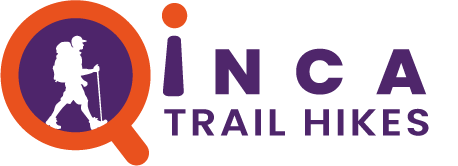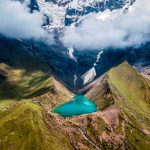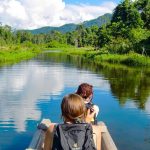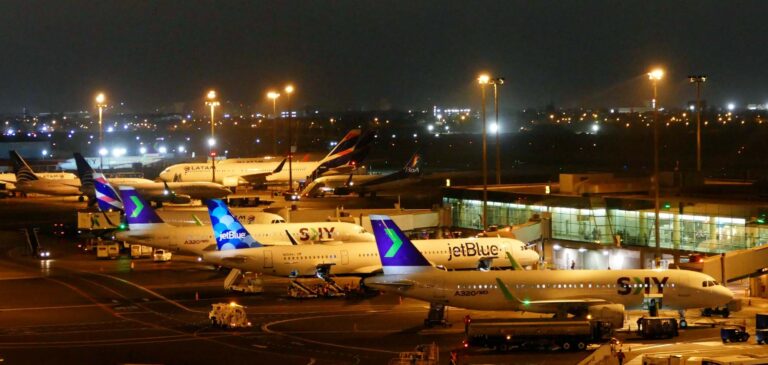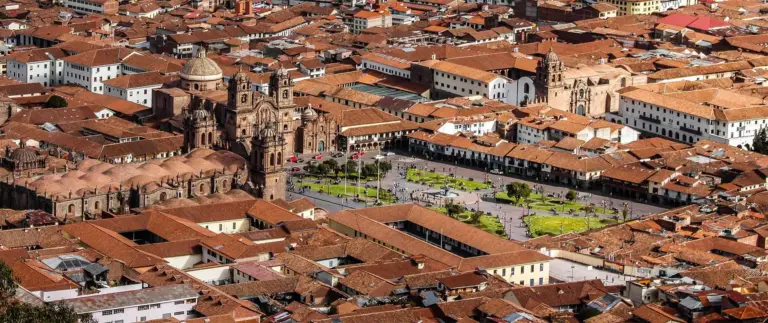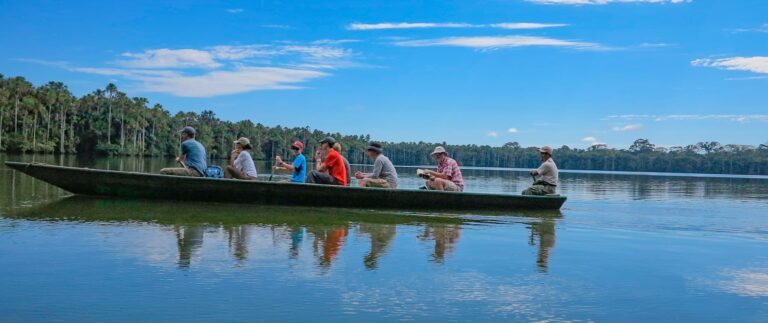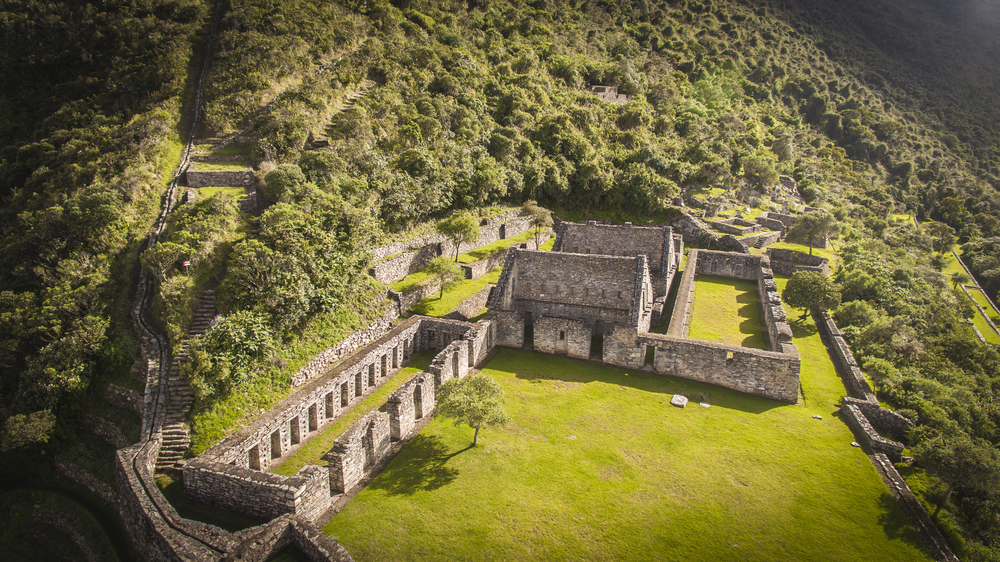
What is Choquequirao?
Choquequirao is a lesser known ruin than Machu Picchu, but the site is a massive Inca ruin. The only way to visit Choquequirao is by walking. This is an isolated place surrounded by high jungle. This site was the gateway to the city of Vilcabamba. Choquequirao and Vilcabamba were the last Inca Capital of the Inca Empire.
Choquequirao means Cradle of God and was it is thought to have been built by the Inca Pachacutec. Due to being so remote the Inca were able to take refuge from the Spanish conquistadors for it is thought for around 40 years, this makes Choquequirao one of the most important site of the Inca empire. Today only 40 per cent is excavated and work continue to discover more mysteries.
Why would you do the Choquequirao trek? if you love peace and love adventure, this is the trek for you. Learn the history of this fascinating site from your expert guide. Explore the area and discover the stories of the ancient Inca.
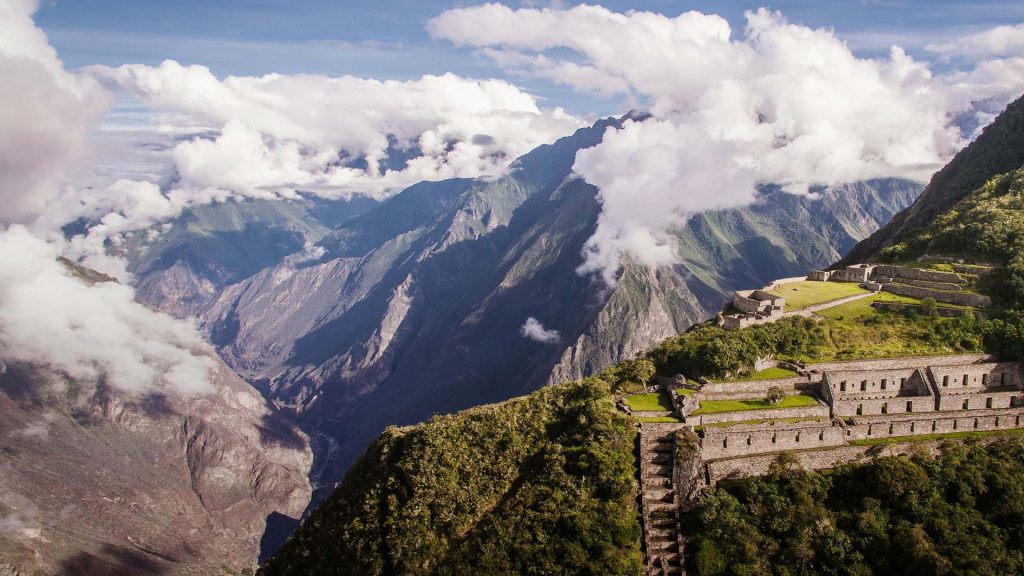
Choquequirao an Important History
The history of Choquequirao is still unknown and its remote location has kept the site a secret for many centuries. Archeologist agree that the site was constructed in the 15th century by Pachacutec around the same time as Machu Picchu. The site is thought to have been expanded by his son Tupac Inca Yupanqui. The site was maybe used as an agricultural center in the 15th Century, for the growing of Coca leaves and other crops for Cusco and the Inca Empire.
Choquequirao was an important location for the Inca and their Emperor Manco Inca. When the Spanish arrived in the 16th century, the Inca retreated from the Spanish held Cusco to Ollantaytambo where a bloody battle took place.
Although Manco Inca achieved an impressive victory over the Spanish, he decided Ollantaytambo was too close to the Spanish controlled Cusco, and retreated deep into the high jungle. High in the Jungle, Manco Inca established the “Neo Incan Empire” and it’s capital Vilcabamba in 1539. During this time Choquequirao served as a stronghold and checkpoint for the capital city of Vilcabamba. Because of its relation to the city of Vilcabamba, Choquequirao was one of the most important Incan sites in the 16th century.
Where is Choquequirao?
Located at 3000 meters above sea level, Choquequirao is placed on a leveled hilltop high above the Apurimac River. Scientists agree the hilltop was leveled and stones placed to make a large platform for many stone structures. Choquequirao is located in the Anta province of Cusco and is part of the Vilcabamba mountain range. The ancient site is a total of 1800 uncovered hectares, which is only about 40 per cent of the total site. It is believed that there are many more structures that are still waiting to be discovered.
Hidden deep within the jungle the only way to get to Choquequirao is by hiking, there are no roads leading even close to the site. There are however multiple different multi-day hikes that will lead you to Choquequirao. On these treks you will be journeying through some of the most pristine Andean jungle landscapes and will be surrounded by jungle flora and fauna. Hit some high altitude spots so be ready to pace yourself, there are mountain passes that are as high as 4000m.
Types of Hikes
There are a few different multiday versions of the hike although all follow the same trail. The classic trail takes 4 days and is the shortest route. Alternatively, you can take the 5-day trail, which is a little longer. Or if you´re an avid hiker and looking for an adventure then the 7-day trail ending in Machu Picchu is ideal. You pass some amazing sights, managing passes at over 4000m in elevation. Choquequirao is towards the top of the Andes Mountains and The Amazon Jungle and because of its proximity to the jungle, you will be graced with Amazonian flora and fauna while trekking. Giving you wild flowers with the most vivid and vibrant colors.
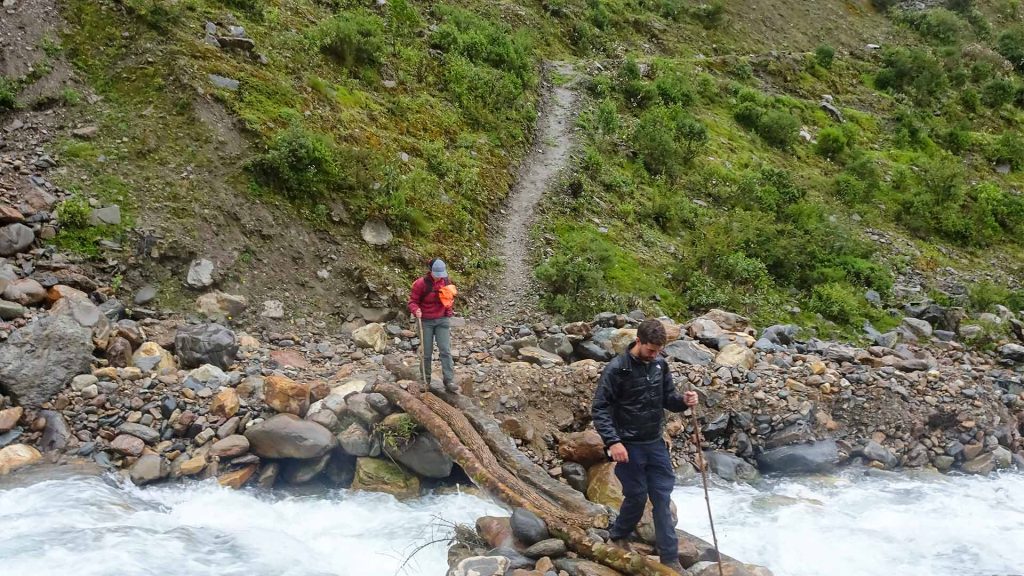
Is the trek to Choquequirao difficult?
Extremely!!! This is one of the most difficult hikes in the region meant only for the most seasoned and experienced adventurers.
Choquequirao is one of the most remote and rarely visited tourist attractions in the region. Every single day will be a challenge there are no rest days you will have to push yourself at nearly every step of the way. First you will descend 1400m only to climb right back up to 3100m. The altitude is not the issue on this hike. The problem is the total elevation gain, over the course of the hike you will ascend and descend multiple times which can be very taxing on the legs and knees. Although it’s not as high as some of the other hikes you still need to acclimatize for a couple days either in the Sacred Valley or Cusco.
The difficult approach is what makes Choquequirao so special. It will seem like you’re there alone especially when compared to the hordes of Machu Picchu. On average there are a total of 25 visitors to Choquequirao per day.
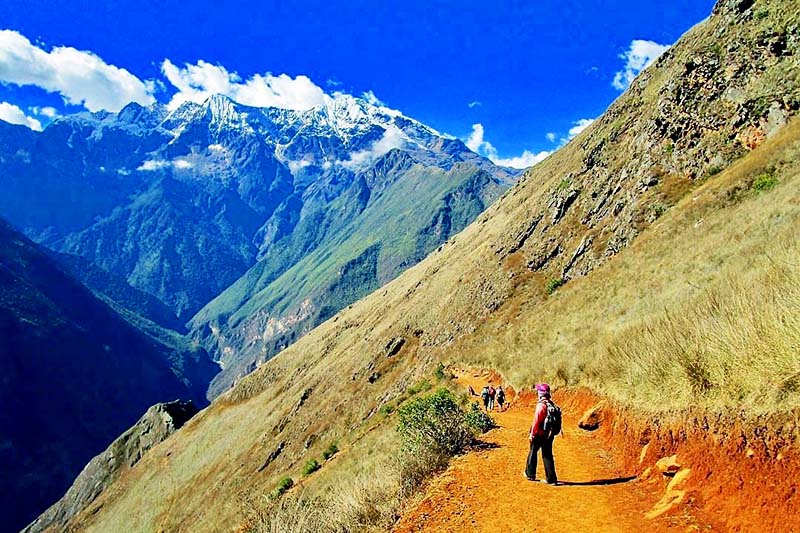
Choquequiroa Trek Compared to The Inca Trail
Number of Visitors
One of the main differences when comparing the two hikes is the number of visitors. Choquequirao only has 25 hikers on average per day. That is nothing when compared to the 500 permits that are allocated for the Inca Trail. Even though the hike is very difficult it has a special feeling because it’s such a secluded hike. It’s unlikely you will see very many people if anyone at all on the trail.
Which is more Difficult?
So, which hike is more difficult? Well, the Inca trail has people of all fitness level completing the entire route every single day. Unfortunately, this is not the case for Choquequirao hike. Only people of high physical fitness should attempt Choquequirao especially if you are considering the 7-day hike. Don’t expect there to be any easy days, you will have to pace yourself knowing there won’t be any rest until the end.
Wildlife
Generally, the wildlife is the same on both hikes being in the same region and ecosystem. However, there are less people at Choquequirao so your chances of seeing some of the more uncommon creatures is a bit higher.
Guided Tour or solo Adventure?
When deciding whether or not to take a guided tour there are a few things to consider. The pros to taking a guided tour may out weigh the solo adventure. On a guided tour you have the peace of mind that your guide knows exactly what route to take. This can be especially valuable when on a hike as remote as Choquequirao.
Consider that the amount of gear needed to complete a multiday hike is a lot. Taking all that weight on a hike as difficult as Choquequirao can be too much for most people. If you have a guided tour however you will have most of your gear packed onto the horses making the hike significantly easier on the body. Your guide will also provide all the tents, camping gear, cooking equipment and the food so you won’t have to think about any of that.
We recommend you only go it solo if you are really seeking the ultimate challenge and adventure. It may be more enjoyable and less stressful overall if you go the guided our route.
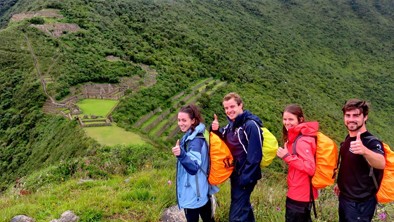
Altitude Sickness
At this elevation altitude sickness is a slight concern but not as bad as some of the other hikes in the region. You should still acclimatize in lower elevations for a few days before trying this or any other hike.
Tips To Avoid Altitude Sickness In Cusco
- Drink lots of water: Staying hydrated is one of the most effective ways to prevent altitude sickness. Make sure you are drinking water thorough the day and at night.
- Stay well rested: Being well rested will help your body as you adjust to the altitude. If you are not feeling well consider just taking a nap.
- Drink coca tea and chew coca leaves: An ancient remedy the Andean people have been using for thousands of years. The coca plant has extremely beneficial properties especially when combining altitude sickness
- Get to lower elevation: If you do start to develop symptoms and nothing is helping then getting yourself to a lower elevation is the best thing to do.
- Bring oxygen tanks: If you really want to be prepared you can bring oxygen with you but this is really for the higher elevation hikes and may not be necessary.
Whats the average cost of a guided Choquequirao tour?
The simplest and most secure way to get to Choquequirao is to take a guided tour with a registered tour operator. The Choquequirao tours average between $450 – $800 depending on the company you chose and how comfortable of an experience you want. All of the gear will be included in the cost so you won’t have to rent any additional gear from a third party. You also won’t have to bring your own tent stove etc. and unless you brought all of that gear with you it will most likely be more expensive renting it all separately.
Getting to Choquequirao Trailhead alone You can certainly make the journey without a guide but it’s both physically and logistically challenging. You will first need to take a private taxi or colectivo to the town of Cachora from Cusco. The easiest way is to then take another taxi to Mirador de Capuliyoc this will take off a substantial portion of the hike. If you want to hike the full 4 days start the trail at Cachora. From the trailhead continue on until you hit the first campsite Playa Rosalina. If you feel like you want to cover more ground before pitching your tent then continue on until you arrive at the next campsite Santa Rosa.
***PLEASE NOTE: There are multiple different campsites throughout the trail so you should not have a hard time finding a place to pitch your tent.
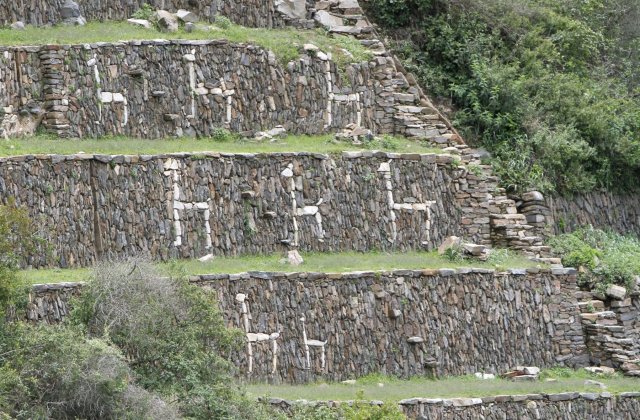
What is the actual distance from the trailhead to Choquequirao?
The standard 4 day hike to Choquequirao is 43km. You can break up into a smaller hike if you take a taxi to Mirador de Capuliyoc.
Arriving at the Choquequirao archeological site
You did it you completed the hike now it’s time to enjoy the fruits of your labor! You can either spend the day at Choquequirao (There is no time limit but you cannot sleep there). Or, you can camp at one of the close by campsites and explore the following day with more time and at a more leisurely pace.
Packing checklist for Choquequirao trek (guided tour)
What you have to take with you?
- Passport: the same as you booked your tour
- Day Bag: To carry your daily essentials
- Reusable Water Bottle: A 2 or 3 liter water bottle or camel back is best
- Good footwear: Comfortable hiking or running shoes with good tread is recommended
- Sunscreen: You will be a decent elevation so sun protection is necessary
- Headlamp or flashlight: Important for going to the bathroom at night
- Insect repellant: The biting insects can be terrible in the jungle especially in the rainy season
- Hat and sunglasses: To protect you from the rain and the sun
- Warm layers: A warm fleece or down jacket as well as thermal underwear for the nights
- First aid kit: It’s better to be safe than sorry
- Personal medication: If you take any medication let your guide know and have it with you
- Battery Bank: There will be no places to charge electronics
- Camera: If our phone camera is good enough there’s no reason
- Hand sanitizer/wet wipes: To keep yourself clean
- Snacks: To keep our energy up during the hike
- Extra money: For tipping or buying souvenirs
What to put in duffle bag the tour company provides
The tour company will provide a duffle bag to put all of your non essential personal items. Please be aware you will not have access to this bag until you arrive at the campsite as the pack animals will be in front carrying it. The bag can carry a maximum of 7kgs, remember, your mattress sleeping bag and clothes will all be in this bag. If you need to carry more than 7kgs you can certainly take it with you in your day bag.
***PLEASE NOTE: You will not be allowed access to the duffle bag until arriving at camp. Make sure all your daily essentials are with you in your day bag.
Standard 4-day Choquequirao Trek Itinerary
Day 1: Cusco – Capuliyoc– Playa Rosalinas – Santa Rosa
An early start for you Choquequirao adventure. The guide will pick you up from your hotel around 4am. In your private van drive to the town of Capuliyoc. Here pack the gear onto the horses and we will start the hike. Trek until you reach the first rest stop at Playa Rosalinas, here you will have lunch and a rest. After lunch continue until you reach the first campsite at Santa Rosa, here have a tasty dinner and get a good nights sleep for tomorrows journey.
- Meals: Lunch – Dinner
- Accommodation: Camping facilities
- Distance: 12kms/7.5 miles
- Difficulty: Difficult
Day 2: Santa Rosa – Maranpata – Choquequirao
At first light eat a delicious breakfast to ready for the day ahead. Walk up for around 2 hours over rocky terrain with many switchbacks. Later you will arrive at the remote Andean village of Maranpata. Take in all the amazing landscapes and the beautiful scenery that feature in the remote region seeing many varieties of plants and animals that reside in this area. Continuing on the trail later you will reach the ruin of Choquequirao.
At Choquequirao have lunch and get an in depth guided tour of the ruins by your knowledgeable expert tour guide. There are many important sites such as urban plazas, sacred temples, the “llama section”, agricultural terraces, and much more. Once you’re done exploring the complex head back down to the second campsite to eat dinner and stay the night.
The site you will have lunch and later a tour of the ruins with your expert guide. There is much to see, important sites such as the urban plazas, sacred temples, the agricultural terraces, the llama section and so much more. Once you are finished at the complex, walk to the second campsite where you will enjoy dinner and relax and enjoy the stars.
- Meals: Breakfast – Lunch – Dinner
- Accommodation: Camping facilities
- Minimum Altitude: 1900m/6234ft
- Maximum Altitude: 3,150m/10,397ft
- Distance: 8km
- Difficulty: Difficult
Day 3: Choquequirao – Maranpata – Chiquisca
Once you’ve had your fill of your satisfying breakfast, head back up to Choquequirao to explore anything you may have missed the day before. After exploring all you can turn back towards the rural village of Maranpata where you will have lunch and relax. Continue toward the Apurimac River and beyond for a few hours until coming to the third campsite Chiquisca.
- Meals: Breakfast – Lunch – Dinner
- Accommodation: Camping facilities
- Distance: 12kms/7.5 miles
- Difficulty: Difficult
Day 4: Chiquisca – Saywite – Cusco
Today is the final day of your Choquequirao adventure. Another early start and a hot breakfast. We set off trekking up a difficult steep path before come arriving at a great vantage point with the best views of the Apruimac River Canyon. That was the last part of the hike, now we travel by car. Take your private vehicle with your guide to the small Andean village of Cachora to have lunch.
Once you have finished lunch continue by car to the archeological site of Saywite. Here you will get a chance to admire the Saywite monolith, which has many intricate carvings of animals, agricultural terraces and hydraulic canals and channels. The last leg of the journey, travel back to your hotel finally arriving in Cusco around 6:00pm. Take pride in your accomplishment, having completed one of the most difficult hikes in the region.
- Meals: Breakfast – Lunch
- Distance: 8km
- Difficulty: Difficult
This itinerary has been provided by ORANGE NATION
1. Sam Travel Peru
Over 80 trips Completed | Regional Expert Service level: top
- Small intimate groups of 2 to 8 person
- Guaranted and Secure Trips
SAM TRAVEL PERÚ is a family-owned Travel Company & Tour Operator located in Cusco, Peru that creates customized uniquely designed adventure treks and tours to untouched wilderness places, OFF THE BEATEN TRACK, in the High Andes Mountains of Peru. Our many years of experience is demonstrated in our excellent reviews!
Explore website
2. Orange Nation Peru
Over 45 trips Completed | Regional Expert Service level: Standard
- Small intimate groups of 2 to 8 person
- Guaranted and Secure Trips
ORANGE NATION is Peruvian owned Travel Company that specializes in tour and trekking in Cusco Peru. They are experienced in offering small group personalized service for tours from the BREATHTAKING ANDES MOUNTAINS TO THE MAJESTIC MACHU PICCHU CITADEL. Making your experience beyond what even you could have dreamed!
Explore website
3. Spider Travel Peru
Over 45 trips Completed | Regional Expert Service level: Standard
- Small intimate groups of 2 to 8 person
- Guaranted and Secure Trips
SPIDER TRAVEL PERU is an innovative adventure travel company in Cusco Peru that offers UNPARALLELED EXPERIENCES TO UNTOUCHED WILDERNESS AREAS. Our adventure treks and tours are specific and carefully designed to cater to budget and personal needs!
Explore website
4. Glamping Peru Treks
Over 45 trips Completed | Regional Expert Service level: Luxury
- Small intimate groups of 2 to 8 person
- Guaranted and Secure Trips
Glamping Peru Treks creates treks and tours that offer unsurpassed luxury and comfort while hiking off the beaten track. All accommodations, food, and services are of the highest quality and standards. If you are looking for something UPSCALE AND LUXURIOUS while trekking or touring, this is the absolute best option for you. Do not be afraid to work with their service operators to create your dream personalized luxury trek or tour. The company group size averages 2 to 4 persons, not exceeding 8 people. If you love your privacy, be sure to ask for a private tour.
Explore website
5. 69 Explorer Peru
Over 45 trips Completed | Regional Expert Service level: basic
- Small intimate groups of 2 to 8 person
- Guaranted and Secure Trips
Welcome to 69 Explorer, a premier tour operator based in the heart of Cusco, Peru. As a company born and nurtured in the lap of the Andes, we specialize in creating unforgettable travel experiences in one of the world’s most enchanting destinations.
Explore website